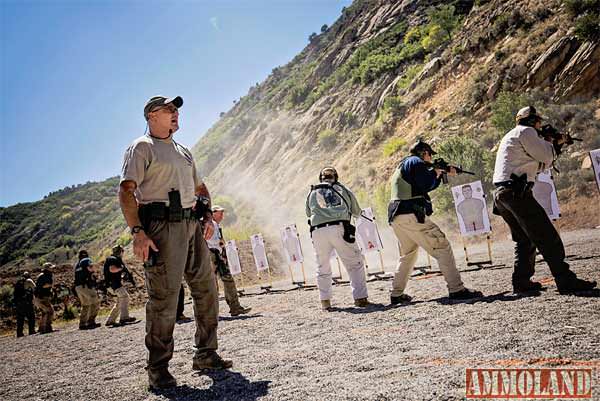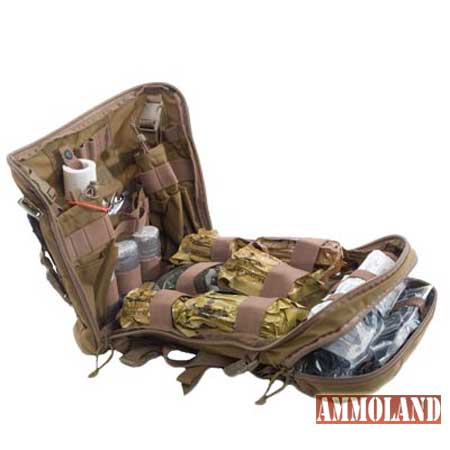By John Krupa III


Provo, Utah –-(Ammoland.com)- How many times have you been at the range and thought “What do we do if someone gets shot or injured during training?”
You’d be surprised to learn that there are a lot of range facilities do not have a posted Emergency Medical Action Plan (EMAP) in place to deal with serious on-site injuries!
Sure, they may have a policy protocol established in their range operations manual, but who is responsible for executing it? Have they been trained appropriately on how to respond to medical emergencies and what resources are available on site to actually deal with serious injuries?
If you do ask that question at the range, most of the time the response will be to use the first-aid kit that is available on site and to call 911 for serious injuries.
It’s obvious that there needs to be a much more detailed plan other than just slapping a band-aid on a wound and waiting for EMS to arrive.
It has been my experience when inquiring about EMAPs at range facilities that they are not all prepared to deal with serious medical emergencies and lack proper equipment and training to deal with trauma injuries.
So let’s explore some steps on how to establish a reliable EMAP and how it can be implemented so students, instructors and range staff alike will know these procedures and what actions to take at the onset of each training evolution.
Start out by acquiring medical supplies and build medical kits that can be easily identified and accessible on the range. I recommend building a First-Aid Kit, a Trauma Injury Kit and AED Kit.
The First-Aid Kit is typically built using a heavy duty plastic tool box or tackle box that is orange or yellow in color. Use an indelible black marker to write FIRST AID KIT on the front, back and sides of the box in large letters so it can be easily identified.
The First-Aid Kit will include all of the essential medical supplies that will be used for non-serious injuries and will be accessed regularly to treat small scrapes, cuts and other minor injuries. This kit should be monitored on a regular basis to ensure that used items are replenished.

The Trauma Injury Kit is typically built using a heavy duty plastic tool box, tackle box or soft canvas bag that is RED in color. Use an indelible black marker to write TRAUMA KIT on the front, back and sides of the box or bag so it can be easily identified.
While this kit will rarely, if ever, be accessed (hopefully you won’t need to use this kit!) it should also be monitored regularly so items with expiration dates can be rotated out and replaced with fresh supplies.The Trauma Injury Kit will include all of the essential medical supplies that are needed to treat serious trauma injuries such as; hemorrhage control, deep lacerations, penetrating puncture wounds, gunshot wounds, sucking chest wounds and tension pneumothorax.
The Trauma Injury Kit should ONLY be accessed for serious injuries and by personnel that have been properly trained in TCCC (Tactical Combat Casualty Care) or training of equivalent level.
The AED Kit (Automated External Defibrillator) is something that every range facility needs to acquire and have available at all times. While AED units can be purchased new….
Read the rest of the article on Action Target’s Blog found here: https://tiny.cc/bqe9tx
John Krupa III – Bio
John is a police officer with the Orland Hills Police Dept. (IL.) and has over 24 years of experience in law enforcement. He has previously served as a patrol officer, FTO and firearms instructor with the Chicago Police Dept. He is a recipient of the Award of Valor, Silver Star for Bravery and Distinguished Service Award for his actions in the line of duty. He is a certified Master Firearms Instructor from PTI and graduate firearms instructor from the Secret Service Academy, FBI, DEA and FLETC. He holds the rating of Distinguished Weapons Expert with the Department of Homeland Security and has presented numerous courses at training conferences across the country including ASLET, IALEFI and ILEETA. John can be reached at – [email protected]
About Action Targets:
Action Target is a privately owned business headquartered about 40 miles south of Salt Lake City in Provo, Utah. For the last 20 plus years, Action Target has been the dominant force in shooting range equipment design and manufacturing for law enforcement, military, and commercial ranges around the world. We are proud of our commitment to deliver advanced firearms training products that help prepare our men and women in uniform for the heroic job of defending our safety and our freedom. Visit: www.actiontarget.com
